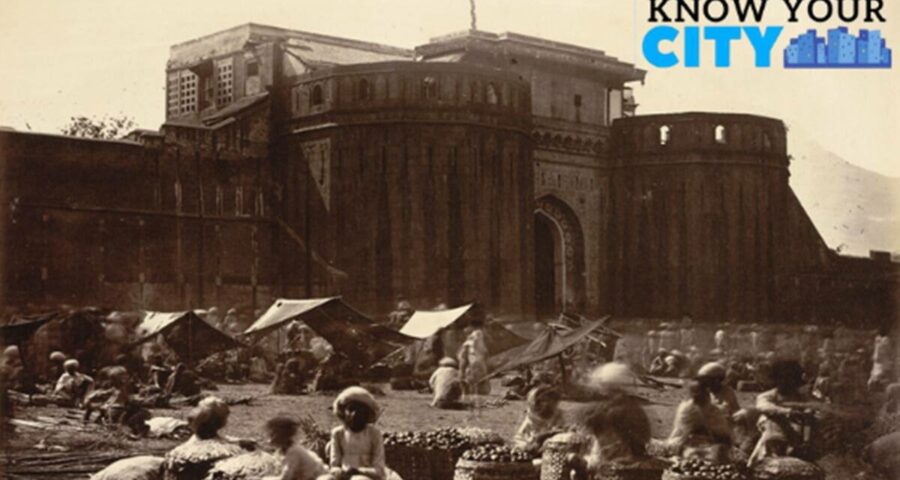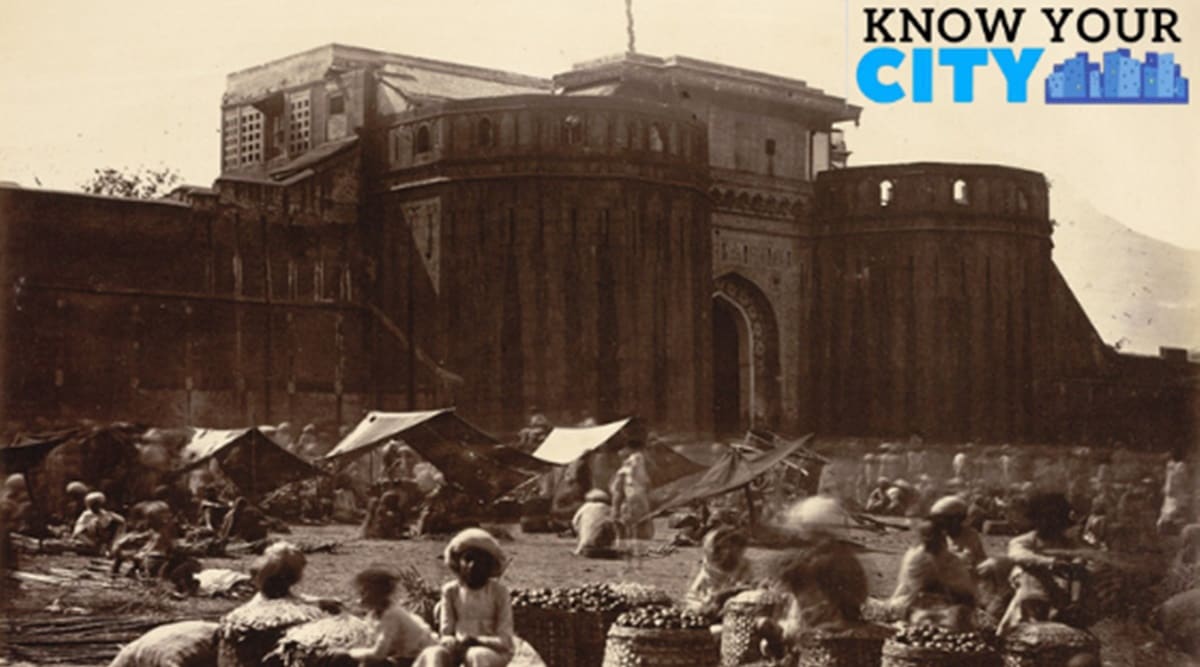The report 'Sanitary State of the City of Poona' submitted by Dr A H Leith to the Bombay Governor in 1863 recommended that the walls of Shaniwar Wada be pulled down to give the city an open square and a wide east-west road.
Shaniwar Wada was just five years shy of a centenary when a fire broke out inside its fortified compound on February 21, 1828. Although it wasn’t the first fire in the palatial house of the Peshwas, it was the most devastating of the four fires that the lofty building had seen since 1732 when it was inaugurated by Baji Rao I.
Since the fall of Peshwas in November 1817, the Shaniwar Wada was under control of the British. The fire which, it is said, simmered for over a week, destroyed most of the interiors of the once magnificent yet austere building and what was left was little more than the compound walls and its many gates.
Recounting the incident 40 years later, historian N V Zoshi wrote how the burning of Shaniwar Wada, the symbol of Maratha empire, was a traumatic experience for the city and its inhabitants.
“It was the worst thing to happen. (Shaniwar) Wada was one of its kind. It was the pride of Pune. When it burnt down and turned into rubble locals cried in floods of tears. People who couldn’t bear to look, would turn faces away while passing from the area. It was a great trauma for Pune residents… This Wada saw four fires since it was built, but now nothing is left inside. Such was its renown that Jharkaris bought the ashes (to sieve it for gold), ” Zoshi wrote in ‘Pune Shahrache Varnan’, published in 1868.
As per Pune Nagar Sanshodhak Vritta, before this incident, three major fires had been reported in Shaniwar Wada in 1794, 1808, and 1812.
Even before this destruction, the status of the Shaniwar Wada was slowly fading under British control. Soon after seizing control, the British used the sprawling building to house Collector’s Office. Later, the ground floor was used as a prison and the upper storey housed a dispensary and insane hospital.
That same year – 1828 – the British had demolished another prominent Peshwa building, Shukrawar Wada, which had fallen prey to fire some time ago. The five-storey wada was built in 1748-50 on Baji Rao I’s orders Jayantrao Khasgiwale. As per Pune Nagar Sanshodhak Vritta, the material from the demolished Shukrawar Wada was used by British for some construction in Poona camp.
Dr Leith proposes demolition
In 1863, the then Governor of Bombay tasked Dr A H Leith, Deputy Inspector General of Hospitals, to conduct an inquiry into the ‘sanitary state’ of Pune and suggest means to improve the situation. Leith’s report, submitted the same year, strongly criticised the sanitation in the old city, the congestion in residential areas and roads, and the ‘unhygienic lifestyle’ of the residents.
While he made numerous recommendations to improve cleanliness including setting up of movable toilet blocks, proper disposal of night soil and sewage, provision of clean drinking water through setting of public tanks, Dr Leith laid considerable emphasis on widening of roads, which as per him were extremely congested and blocked ventilation.
He proposed that two wide east-west streets be knifed through the densely populated old city – one from Rasta Peth to Onkareshwar Temple through Shaniwar Peth, and another from Burud Ali to Khasagiwale Wada.
“The sanitary advantage expected from making these streets is that they will open out to ventilation by the most prevalent winds the most densely-peopled sections of the city,” he said in the report, adding that although the plan seems difficult to implement due to the presence of the large building on the proposed route, it can be achieved as most of these buildings were “hollow or contained mean huts”.
One such building was Shaniwar Wada, or whatever remained of it, which Leith said should be pulled down.
“…With a view to improve the ventilation of the city of Poona, the walls of the Sunwar Palace be thrown down, so as to give a large open square, through which one of the proposed east and the west road would run, and which might be planted with trees and used as a place of recreation by the citizens,” dr Leith wrote in his report.
Accordign to Jaymala Diddee and Samita Gupta, who co-authored Pune: The Queen of the Deccan, the government was quick to accept Leith’s report in its entirety but did not act on most recommendations.
“The records show that the government instructed the authorities concerned to implement the suggestions quickly. They were willing to sanction whatever funds were needed for the purpose,” they write in the book published in 2000. Fortunately, most of the recommendations in the report – including the one pertaining to the demolition of Shaniwar Wada – were not implemented.
Source: Read Full Article





